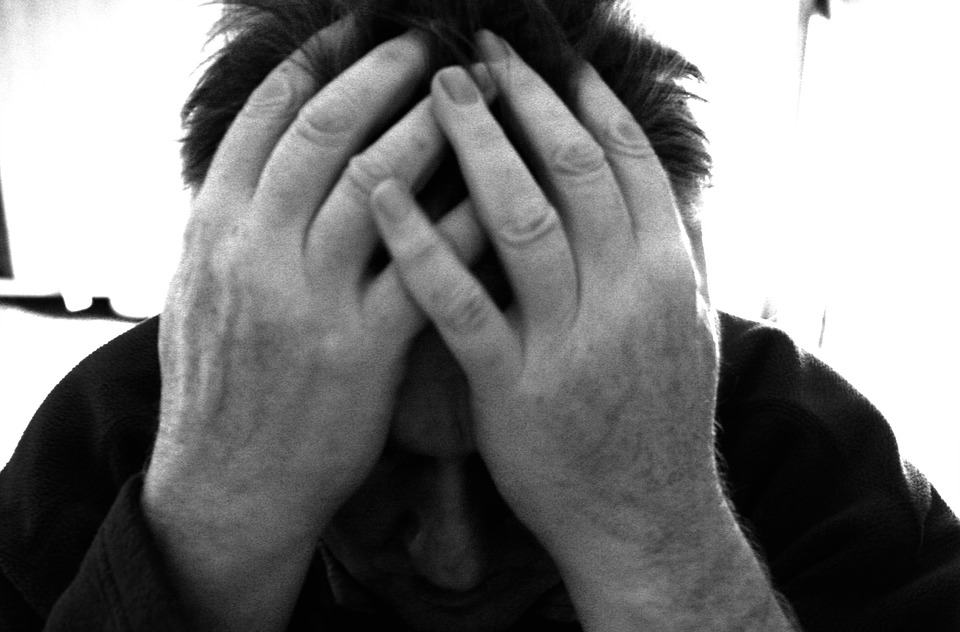
Case Presentation
The patient is a 47 year old woman with a history of traumatic brain injury who complains of chronic daily headaches, described as a dull sensation brought on by sensory overload, stress, and changes in barometric pressure. The headaches can feel very sharp. They are localized to the area of her head injury and began after her brain injury. Prior treatment of the headaches have included cyproheptadine, with no results, and gabapentin 600 mg three times daily with mild improvement. Her traumatic brain injury occurred after a fall with loss of consciousness of unclear etiology. The fall resulted in a depressed skull fracture and left frontal epidural hemorrhage. She was treated with a craniotomy and plate placement.
Since her injury, she has also had problems with mild balance, dizziness, and mild cognitive deficits. Her dizziness occurs most days, is generally present at the end of the day, and is aggravated by stress and sensory overload. Her medical history also includes glaucoma, cervical and lumbar arthritis, and Graves’ disease status post strabismus surgery which overcorrected a vertical diplopia. She now complains of horizontal diplopia. Review of systems was positive for left lower extremity weakness and hearing loss since her injury.
On physical exam, she was pleasant and not in distress. She was alert and oriented to person, place and circumstance. Speech was fluent without dysarthria. Her left eye was proptotic and injected. Pupils were equally reactive and responsive to light. She complained of diplopia on the left lateral and upward gaze during extraocular movements. Hearing was reduced on the right, and the rest of her cranial nerves were intact. Motor tone was normal. Motor strength in the right extremities was 5/5, but left knee flexion, extension, and ankle dorsiflexion were 4/5. Deep tendon reflexes were brisk and symmetrical throughout with negative Babinski response. Light touch, pinprick, and vibratory sensation were intact. Rapid alternating movements were slow. Fine finger movements and heel-to-shin were adequate for her habitus. She was unsteady on Romberg testing with eyes closed and was unable to tandem walk. Her gait was slow and slightly broad-based.
Discussion
A post-traumatic headache (PTH) is defined as a secondary headache that develops within seven days of head trauma or within seven days of regaining consciousness from head trauma.[1] PTH is prevalent after a traumatic brain injury. One study reports that more than 41% of subjects with a traumatic brain injury reported headache at 3, 6, and 12 months after injury while the author’s review of literature found a wide range of 30-90% of patients experiencing headache after traumatic brain injury.[2] This patient had a severe head injury based on the International Classification of Headache Disorders given that she at least had abnormal imaging.[1] Other criteria for severe head injury include loss of consciousness for greater than 30 minutes, Glasgow Coma Scale less than 13, and amnesia longer than 48 hours. Being female, the patient did have a higher risk of developing post-traumatic headache. Having a history of headaches will also increase the risk of PTH2, but unfortunately a history of headaches before her trauma was not obtained from the patient.
The management of PTH can be very difficult because other complex psychological or psychosocial factors may come into play, depending on the extent of the patient’s injury, ability to work, or pre-existing medical conditions[3]. Treatment is also complicated by the lack of controlled studies to guide pharmacological and nonpharmacological management[4]. This leads many physicians to treat the post-traumatic headache just as they would treat a primary headache. Commonly used medications for acute attacks of primary headaches include analgesics and NSAIDs. For prophylactic measures, beta-blockers, calcium-channel blockers, anticonvulsants and antidepressants are commonly used. One study that investigated the treatment of post-traumatic headaches in soldiers found that topiramate significantly decreased the frequency of headaches.[5] Migraine-specific medicines like ergots and triptans may also be used when the PTH resembles a migraine, however caution should be exerted so as not to overuse these medications. A thorough medication review should be conducted with every patient complaining of PTH to verify that medication overuse is not contributing to headache frequency and severity. It is estimated that 18-45% of patients with chronic PTH overuse analgesic drugs4.
Nonpharmacological treatments can include physical therapy as well as psychological and behavioral management4. For example, the patient described in the case complained of sensory overload as a headache trigger, such as being around too many people at a party. She also noted significant disappointment from no longer being able to work. It is possible that a treatment plan that includes providing her with some new skills to cope with social situations, and providing her with more activities to fill her time, may help decrease the frequency of her headaches. This combined with trying a different prophylactic medication such as topiramate as adjuvant therapy to the gabapentin would hopefully help decrease the frequency at which headaches occur.
Summary
The onset of a PTH occurs within days of the initial head injury and is highly prevalent in patients with a traumatic brain injury. It is more common in women. Since few formal studies on the treatment of PTH exist, current treatment is guided by existing protocols for management of primary headaches and migraines. Pharmacologic measures, including acute and prophylactic drugs, as well as nonpharmacologic treatments should be used to manage PTH. There is a significant need for randomized, double-blind, controlled studies to determine the effectiveness of these treatments.
References
1. Headache Classification Subcommittee of the International Headache Society. The International Classification of Headache Disorders (2nd Edition). Cephalalgia. 24(Suppl. 1): 9-160 (2004).
2. Hoffman, JM, et al. Natural History of Headache After Traumatic Brain Injury. Journal of Neurotrauma. 28: 1719-1725 (2011).
3. Obermann, M, et al. Post-Traumatic Headache. Expert Review of Neurotherapeutics. 9.9: 1361 (2009).
4. Lew, H, et al. Characteristics and Treatment of Headache After Traumatic Brain Injury: A Focused Review. American Journal of Physical Medicine and Rehabilitation. 85(7): 619-627 (2006).
5. Erickson, JC. Treatment Outcomes of Chronic Post-Traumatic Headaches After Mild Head Trauma in US Soldiers: An Observational Study. Headache. 51: 932-944 (2011).
Informed consent is a process of getting permission before conducting any healthcare intervention. All patients, after they have been informed about the care that is to be provided and the risk of receiving it and not receiving it, have the right to refuse that care. The five tenets that are the basis of informed consent include the following:
- The patient must be provided with sufficient information about their medical condition.
- In terms of treatment, the patient must be informed about the consequences of action and non-action.
- The patient, using the information provided, must have the opportunity to make a decision based on their own personal values and beliefs.
- The patient must be able to communicate their choices with regards to their medical treatment.
- The patient must be able to make their decision free from the influence of medical professionals, family, friends, or other parties.
During an emergency situation when a patient is incapacitated and it is not possible to get informed consent before commencing treatment, care can still be given. In this situation, EMS may provide lifesaving treatment under the assumption that a normal individual would consent to this type of care. This type of permission is known as implied consent.


